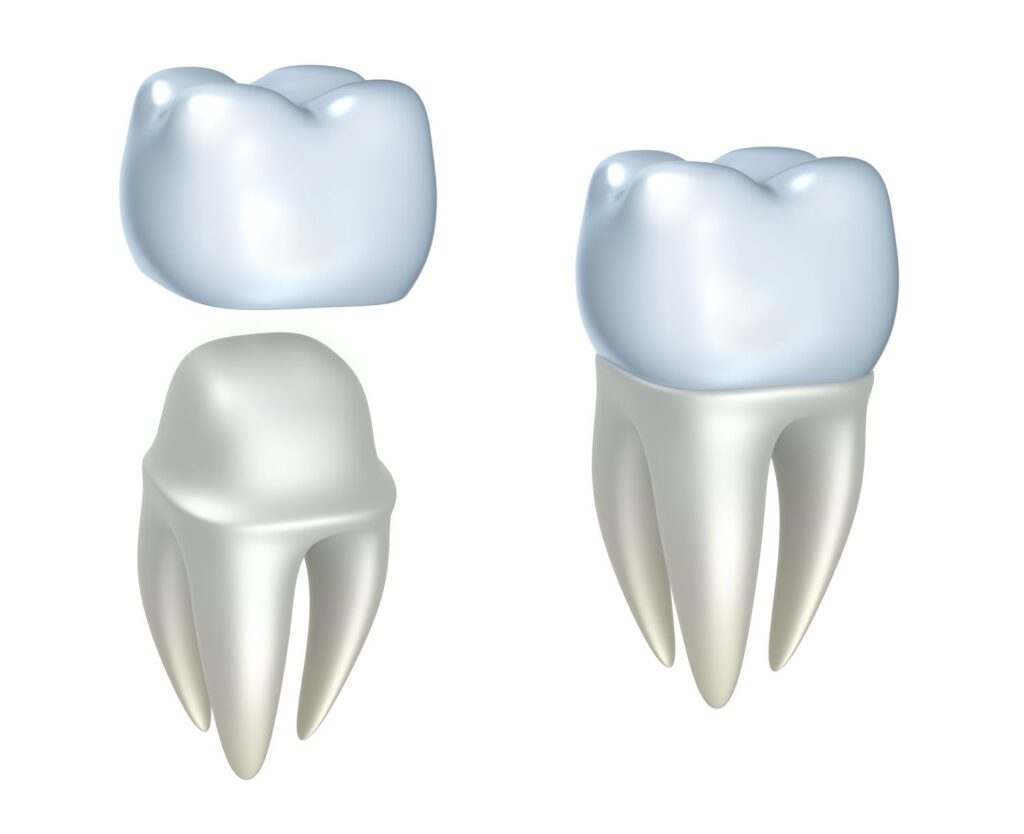Dental erosion, the gradual loss of tooth enamel, is a common concern affecting individuals of all ages. This process is often fueled by acidic foods, beverages, and poor oral hygiene. It also can lead to weakened and sensitive teeth. In the fight against dental erosion, dental crowns emerge as a protective solution. They are a crucial ally against erosion, properly restoring your teeth and function.

The Culprits Behind Dental Erosion
Before delving into solutions, it’s essential to understand the culprits behind dental erosion. Acidic substances in our diet, such as citrus fruits, sodas, and certain medications, contribute to the breakdown of enamel over time. Additionally, conditions like acid reflux and bulimia can speed up the erosion process. Unfortunately, this can leave teeth vulnerable to decay and sensitivity. Finally, your enamel can naturally thin as you age.
How Dental Crowns Work as Shields
Dental crowns are customized covers that encase the entire visible portion of a tooth. Your dental team can craft them from durable materials like porcelain, metal, or both. Crowns serve as protective shields against further erosion and damage.
Preserving Tooth Structure
One of the key benefits of dental crowns is their ability to preserve the remaining tooth structure. When erosion compromises a tooth, a crown can provide a robust and resilient outer layer. As a result, this can prevent further deterioration. This not only protects the tooth but also keeps its function for biting and chewing.
Restoring Aesthetic Appeal
Beyond protection, dental crowns play a pivotal role in restoring the look of eroded teeth. Enamel erosion can lead to discoloration, irregularities, and a generally worn appearance. Crowns seamlessly blend with the surrounding teeth. This is due to their natural-looking materials and customized design. As a result, it should create a uniform and aesthetically pleasing smile.
The Crown Placement Process
The process of getting a crown has several steps.
Consultation and Evaluation
The journey to combat dental erosion with crowns begins with a consultation with your dentist. During this visit, the dentist will assess the extent of erosion. They will also discuss treatment options and determine if a dental crown is the most suitable solution.
Tooth Preparation
Before placing a crown, your dentist will prepare the affected tooth. This involves removing a thin layer of enamel to create space for the crown. In cases of severe erosion, the dentist may build up the tooth with a filling material to ensure a stable foundation for the crown.
Customized Crown Creation
Once the tooth is prepared, your dental team will take impressions to create a custom-fit crown. Modern technology allows for precise and accurate crown fabrication. This process makes sure that you have a comfortable fit and a natural look.
Temporary Crown Placement
While waiting for the permanent crown, you may need a temporary crown to protect the prepared tooth. This solution prevents sensitivity and maintains the tooth’s function until the final restoration is ready.
Permanent Crown Placement
Once finished, your team will replace the temporary crown with the permanent one. The dentist ensures a secure fit, checks your bite, and makes any necessary adjustments. This is because they want to guarantee optimal comfort and function.
